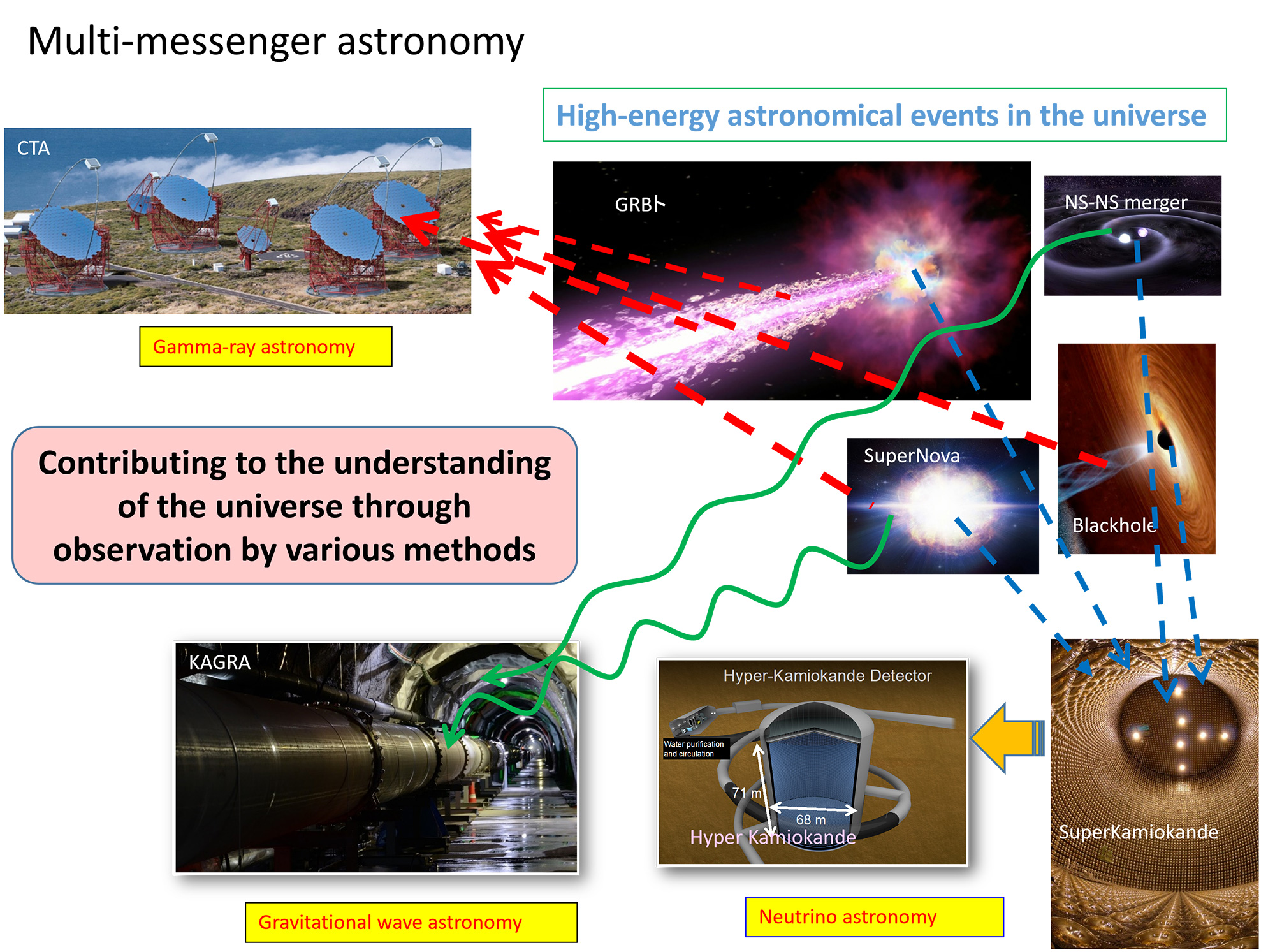Multi-Messenger Astronomy Laboratory
KEYWORD
- multi-space observations
- gravitational waves
- general relativity
- elemental synthesis
- laser interferometry
- cryogenic technology
- ●Multi-messenger astronomy based on gravitational wave observations to reveal the Universe
The recent space observations have led to dramatic advances in our understanding of the universe. However, fundamental mysteries such as dark energy and dark matter remain unsolved. In 1915, 100 years after Einstein's prediction, gravitational waves from a binary black hole merger 1.3 billion light years away from the earth were observed for the first time. Two years later, gravitational waves from the merger of a binary neutron star were also observed. At the same time, multi-wavelength electromagnetic wave observations, including optical infrared observations, have been carried out, and multi-messenger astronomy is rapidly developing.
Observation of neutrinos as well as gravitational waves is equally important, and multi-messenger astronomy should be extended to more space observations in the future.
Research staff
Specially-appointed Professor
Gravitational wave physics, Multi-messenger astronomy

Research Introduction
Research objective
The goal is to advance the understanding of the universe by integrating space observational data, including electromagnetic waves, gravitational waves, and neutrinos, as explained in the figure below.

To improve sensitivity of gravity wave telescope
It is important to contribute to the development of multi-messenger astronomy by improving the sensitivity of the large cryogenic gravitational wave telescope KAGRA. In particular, we plan to advance technologies related to cryogenic mirrors.


